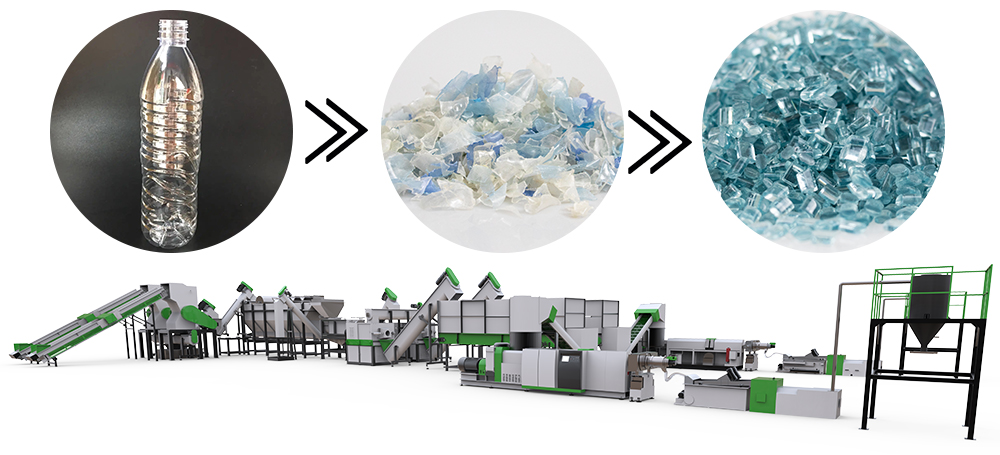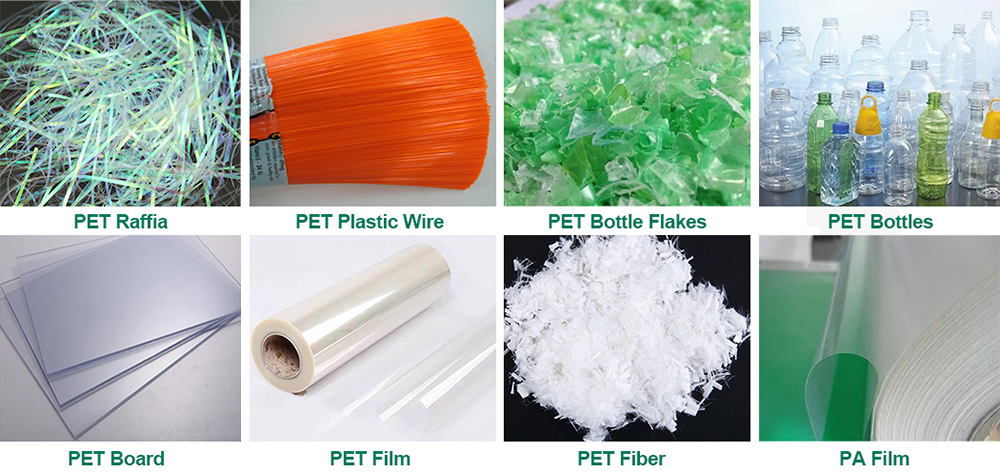Article paragraph
Ⅰ Characteristics of PET plastic bottles
Ⅱ PET plastic bottle recycling method
Ⅲ The use of PET plastic bottles after recycling
PET plastic bottle characteristics
Polyethylene terephthalate is the most important variety of thermoplastic polyester, English name Polythylene terephthalate referred to as PET or PETP (hereinafter referred to as PET), commonly known as polyester resin. It is a polycondensate of terephthalic acid and ethylene glycol, and together with PBT, it is collectively referred to as thermoplastic polyester, or saturated polyester. PET is a milky white or light yellow highly crystalline polymer with a smooth and shiny surface.
It has good creep resistance, fatigue resistance, friction resistance and dimensional stability, low wear and high hardness, and has the greatest toughness among thermoplastics; good electrical insulation performance, little effect of temperature, but poor corona resistance. Non-toxic, weather resistant, good chemical stability, low water absorption, weak acid and organic solvent resistance
Pet plastic bottles are the most widely used beverage packaging. In addition to the daily packaging of carbonated beverages, fruit juices, tea beverages, etc., they are also widely used in many fields such as food, medicine, and chemical industry. PET plastic has a wide range of applications in the packaging field, whether it is packaging film, roll material, or beer bottles, PET plastic is used. But when these materials are discarded, there is the question of what to do with them. The recycling of PET plastic bottles can not only solve environmental protection problems, but also can be used as a new raw material resource to alleviate the contradiction of the global shortage of PET raw materials.
PET plastic bottle recycling method
1. Physical recycling method 1 - shredding waste PET plastic bottles into pieces
The physical recycling method of PETt plastic bottles is relatively simple, mainly drying and granulating the cleaned and discarded pet plastic bottles. Cut waste PET plastic bottles into pieces, separate HDPE, aluminum, paper and adhesive from PET, and then wash, dry and pelletize the PET fragments.
2. Physical recovery method 2 - first separation and then processing
First, the impurities such as caps, caps and labels that are not PET on the discarded PET plastic bottles are separated by mechanical methods, and then washed and dried, usually using a centrifugal dehydrator to reduce the moisture content of the fragments to 2%. Dry in a tubular dryer to reduce the moisture content to 0.5% and granulate.
3. Chemical recycling methods
A method of depolymerizing waste PET plastic bottles under certain reaction conditions to generate useful chemicals, such as the production of low-grade fuel gasoline.
PET粒料经物理或化学回收后的用途如下:
1.再制造PET塑料瓶,回收粒料不能直接用于与食品接触,但可用于三层PET塑料瓶的中间层,进而制成碳酸饮料瓶。
2.纺丝制成纤维,回收PET料可制成纤维,可用作睡袋、床垫、枕芯、毛毡等。
3.玻纤增强材料,玻纤增强的回收PET具有良好的耐热性和机械强度,可用于制造汽车零部件,如耐热汽车轮罩等。
4.共混改性,回收PET料可与其他聚合物共混,制成各种改性材料,如与PE共混,可得到抗冲击性能改善的PET共混物;若加入少量聚丙烯,可明显改善共混物的尺寸稳定性。由于PE与PET的极性差别较大,共混时需进行相容性处理。一般采用聚烯烃接枝改性来提高相容性。
5、废弃PET塑料瓶加工再加工。除了可以制成PET塑料瓶外,还可以用来制作睡袋、枕芯、汽车轮罩等。PET塑料瓶全球消费量很高。PET塑料瓶可再加工,变废为宝,不仅解决了PET原料不足的问题,而且减少了环境污染和资源浪费,对可持续发展大有裨益。其回收利用技术前景十分广阔。
在 行业新闻